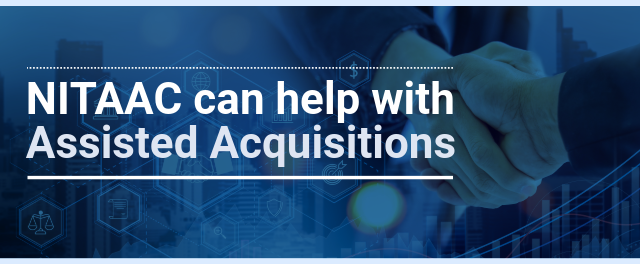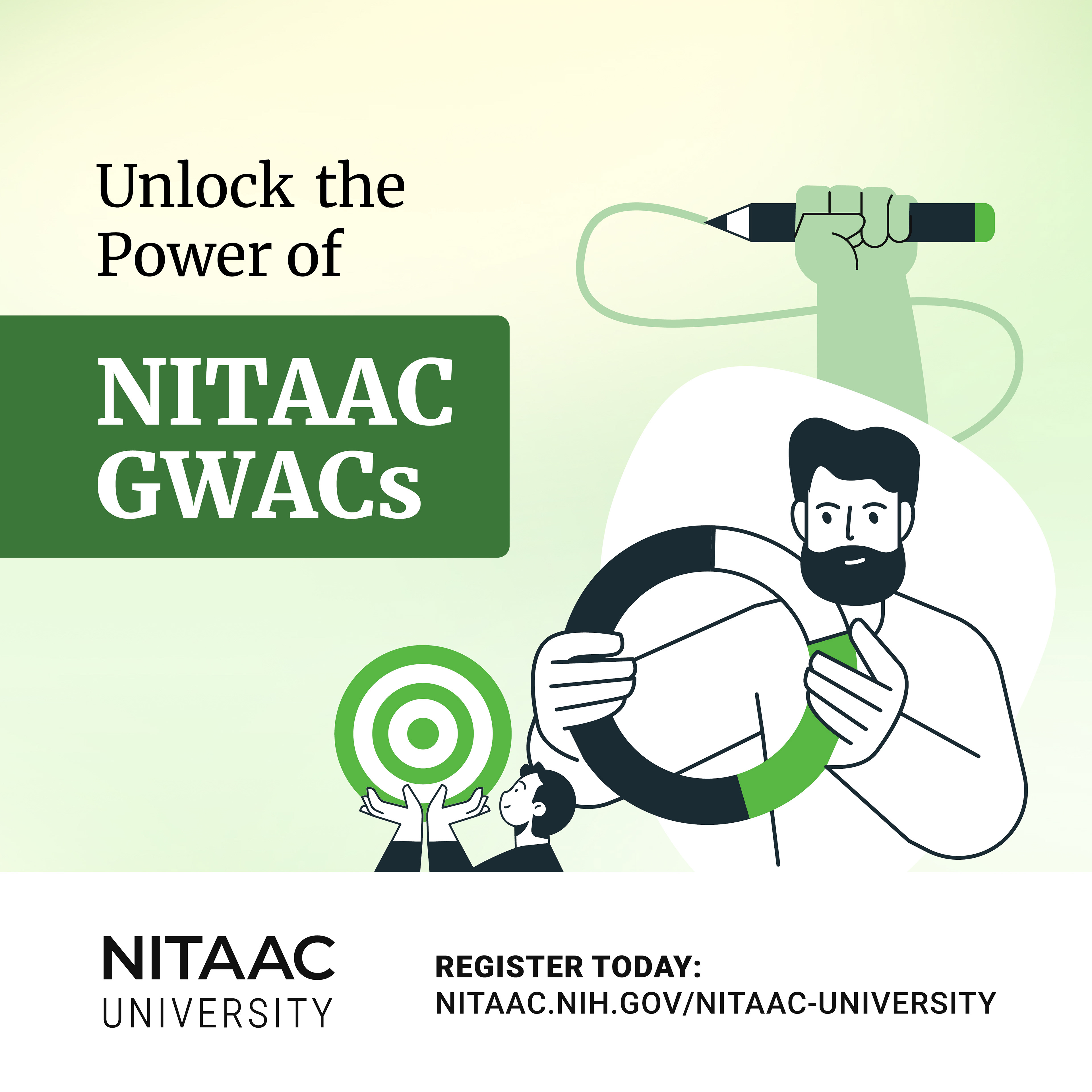NITAAC is an NIH federal government program that helps agencies acquire IT products and services. As a graphic designer, my role provided support for a variety of graphic needs. My works included prints, 508-compliant media, video motion design, collaboration with UX and developers for final products, and assistance with refining web features to enable better user navigation and experience.
Year Created: 2025
Format: Print, Screen
Typeface: Roboto, Merriweather
Prints:
I designed and revamped prints for both internal stakeholders and external conference materials to reinforce NITAAC's brand identity. The following works include flyers, postcards, and other stationeries.
Flyers
NCMA Magazine Ad
Event Postcards
Conference Table Placards
Business Cards
Social Media:
I conceptualized and designed social media materials, including platform profiles, special email campaigns, newsletter headers, seasonal graphics, and speaking engagement event promotions.
Agency Email Campaign Header
Seasonal Images
Topical Campaign Images
In addition, I also designed banners to use for special email campaigns and support background image for visual UI design. The concepts emphasize NITAAC services to acquire IT solutions as a 'for government, by government' program.
Website Banners
Speaking Engagement Posts






"Open for Business" Email Campaign Header
Learning Management System (LMS):
Supported the LMS master and UX/dev team with graphic-related materials, leading to the production of the motion video. I also collaborated with the instructional designer and stakeholders to brainstorm and execute ideas, scripts, and storyboards for instructional videos.
Early Concept 1
Early Concept 1 Expansion
Early Concept 2
Early Concept 2 Expansion
Early Concept 3
Early Concept 3 Expansion
Course Trailer Storyboard
Course Trailer: Introduction to NITAAC GWACs
I also created collages and web images to promote NITAAC University, using an illustrative style as the focal design for the campaign. Some of the works include social media post images and banners.



NITAAC Univesity Grid Posts and Banner
Iconography:
Partnered with the LMS master and the UX team, I also conceptualized and created the iconography to use for web and lesson contents for NITAAC University